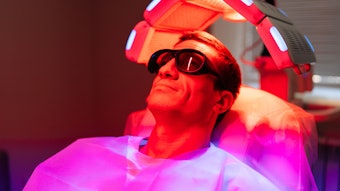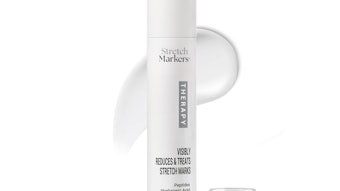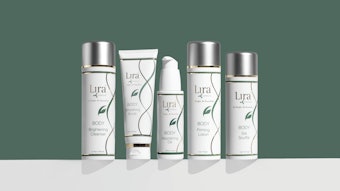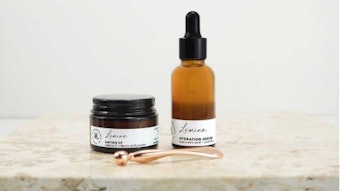
Why does the skin age? The truth is, there are a number of answers to this question, in terms of contributing factors. However, much of the available research points to the cell’s adenosine triphosphate (ATP) energy response, which slows as the body ages.
When there is a deficiency in the cell’s ATP energy response, cellular activity slows, the ability for healthy DNA replication is impeded and the ability to repair and protect against things like inflammation and glycation is compromised.
Knowing this, how do you support the skin as it moves through the stages of aging? How do you target energy in the skin to keep skin looking youthful and healthy? First, it requires understanding what exactly ATP is and what impacts it.
The Cell’s Energy Source
ATP is a nucleoside triphosphate, which is a small molecule used in cells as a coenzyme. ATP is responsible for transporting chemical energy within cells for metabolism. Nearly every cellular function relies on this energy to do its job, including collagen and elastin synthesis, cellular division, healthy DNA replication, muscle contractions and healing.
ATP in skin is like a battery or gas in a car—without these parts, vehicles simply don’t work; and without healthy energy, the corrective work done in the treatment room or as part of a home care regimen will not create optimum results. When energy is responding, everything else works more efficiently.
The majority of ATP production takes place in the mitochondria. As such, the mitochondria is commonly referred to as the powerhouse of the cell.2 As the body and skin age, the batteries in the cells deplete and begin to slow. This is referred to as a decrease in bio-energy, which is also when levels of damaging free radicals increase. By supporting healthy ATP and mitochondria, and working to mitigate the contributors that deplete ATP—such as inflammation and glycation— you can help clients maintain healthy, youthful looking skin.
Supporting Skin Defense
Inflammation is the body’s natural response to trauma, and it is a complex biological process. In most cases, it is the body’s reaction to an infection or wound, but it also may mean a deeper systemic issue is present.
Inflammation is a signal to the body to begin the healing process, thus it is essential to healing wounds and infections, and is an important and necessary part of skin rejuvenation. Only when it is chronic, or prolonged, does inflammation become destructive to the body and the skin, leading to a variety of diseases.
Acute inflammation is the initial response by the body to initiate healing. It generally only lasts for a few days or less. During this process, the body sends internal support to the wound site by increasing the flow of plasma and leukocytes to eliminate pathogens. Swelling indicates the area is full of plasma and leukocytes, and pain draws awareness to the damage, prompting gentle care to be taken. This is normal inflammation, and it is a good thing.
When inflammation persists or serves no purpose, it damages the body along with the skin. Chronic inflammation occurs when the immune system mistakenly attacks normal tissues.1 This has been linked to most challenges that wreak havoc on the skin—aging, hyperpigmentation, rosacea and eczema, to name a few. Chronic inflammation also depletes the cell’s energy, as the cell has to work overtime to try to correct the problem as it directs more energy to it.
Causes of Inflammation
There are five principal signs of inflammation—pain, heat, redness, swelling and loss of function. All of these are essential to regenerating the skin. When the skin barrier is disrupted during the inflammation stage, platelets release pro-youth growth factors and other pro-inflammatory molecules to heal, rebuild and renew the area. This, of course, is the basis of skin regeneration.
Certain esthetic treatments trigger this acute inflammatory response. Skin peels, for example, are a trigger for inflammation. When controlled and short-term, such treatments initiate the rejuvenation process although the skin still must be replenished with antioxidants and growth factors.
When inflammation is a constant part of the physiology, serious issues may occur; including cancer, rheumatoid arthritis, atherosclerosis, hypersensitivities, autoimmune disease, chronic acne, etc.
Inflammation is triggered by a number of stimuli, including burns, overexposure to UV rays, stress, toxins such as pollution and smoking, trauma, alcohol, immune reactions, infection by pathogens, foreign bodies such as dirt and debris, etc. When inflammation is caused by free radicals, it degrades the cells and slows collagen production. Over time, the body’s ability to naturally repair itself is inhibited, which causes visual signs of aging.
Glycation
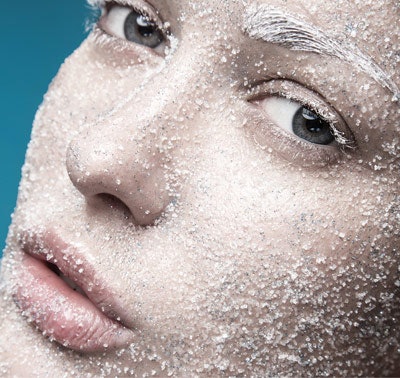 Where does glycation fit into all of this? Glycation is the result of a sugar molecule (fructose or glucose) bonding to a protein or lipid molecule—a haphazard process that impairs the function of biomolecules. In other words, glycation occurs when sugar molecules grab onto fats and proteins, which then form advanced glycation end products (AGEs) causing protein fibers, or collagen, to become stiff and malformed.
Where does glycation fit into all of this? Glycation is the result of a sugar molecule (fructose or glucose) bonding to a protein or lipid molecule—a haphazard process that impairs the function of biomolecules. In other words, glycation occurs when sugar molecules grab onto fats and proteins, which then form advanced glycation end products (AGEs) causing protein fibers, or collagen, to become stiff and malformed.What’s most interesting about glycation, however, is its correlation with skin disorders such as acne, eczema, psoriasis, rosacea, hyperpigmentation and skin cancer. AGEs often make the skin (and body) more vulnerable to the assailants that contribute to skin diseases and disorders, just as chronic inflammation does.
Similar to chronic inflammation, glycation is believed to deplete the cell’s energy as it redirects sources to try to reign in the problem and create a healthy environment. While there is much evidence supporting this theory, studies have not yet confirmed whether glycation occurs within the dermis, so there are still too many unknowns to make any hard and fast claims about glycation. However, ingredients that promote skin health and prevent degradation and inflammation support the skin against any potential glycation damage and other skin disorders.
Managing Internal and External Aging
There are two primary causes of skin aging (as well as inflammation and glycation): intrinsic and extrinsic factors. Intrinsic (internal) refers to the biological aging that occurs with the passing of time. It is the less controllable of the two factors as it is based on genetic programming and physiological decline. Extrinsic factors are external and more controllable, including sun exposure, smoking, sleep, diet, stress and lifestyle.
Over time, skin cells weaken in their ability to repair themselves, and ATP production slows, which results in the visual signs of aging. Damage occurs when oxidative stressors like free radicals penetrate skin cells where they break down collagen and impact the DNA structure of the cell. As damage continues to occur, the cell is more likely to replicate the damaged cells. Collagen production also decreases, resulting in the appearance of fine lines, wrinkles and saggy, slack and crepe-like skin.
Supporting the cell’s mitochondria as well as taking measures to support cells in healing and repair activities becomes important, particularly as humans age. In fact, recent research has identified a particular metabolic enzyme, mitochondrial complex II, found in the “batteries” of the skin cells, as a primary contributing factor to the cell’s health, vitality and energy.3 Thus, supporting this metabolic enzyme is one key to enhancing the skin’s youth, vitality and health. Knowing this, how do you target energy in the skin to keep it looking youthful and healthy?
Recharging Cells
An important part of keeping skin cells charged and healthy is addressing any issues that may be causing inflammation or glycation. While it truly will require a customized approach, anti-inflammatory and antioxidant-rich ingredients, along with those that provide mitochondrial support, will become your greatest assets in the treatment room and in your client’s home care systems; especially since mitochondria, in addition to supplying cellular energy, are involved in signaling cell death and regulating the cell cycle and growth.
Ingredients known to inhibit inflammation, matrix metalloproteinases (MMPs), reactive oxygen species (ROS) and glycation (AGEs), and increase to energy include the following.
Arnica is known to speed wound healing and reduce inflammation.
Pyruvic acid supplies energy to the cells.
Algae extract, in the form of a micro-algae taken from natural habitats in salt lakes, has potent skin-energizing properties, protects the mitochondria of skin cells and increases cell turnover.
Acetyl carnitine HCI facilitates the transport of long-chain fatty acids into the mitochondria for energy production.
CoQ10 acts as an antioxidant inside the cell membrane, regenerating and assisting in cell growth and contributing to the production of energy.
Vitamin C or L-ascorbic acid is a potent antioxidant and collagen builder. It protects against photodamage, neutralizes ROS and supports wound healing.
Thermus thermophilus ferment from a deep-sea microorganism assists in ATP production, supports healthy oxygenation and protects against environmental stressors.
Glucosamine HCI (D) provides anti-inflammatory and anti-glycation support.
Glycine soja (soybean) is an antioxidant and matrix metalloprotease inhibitor (MMPI), with amino acids that promote collagen and elastin synthesis.
Epidermal growth factor (EGF) is a protein composed of 53 amino acids that heals skin injuries and stimulates cell proliferation.
Omega 6 essential fatty acids (linoleic and oleic acid) provide anti-inflammatory, skin-building benefits.
Peptides are proteins that work to activate tissue growth factor (TGF) and collagen production.
Other rejuvenating ingredients to incorporate into a client’s skin health plan, to name a few, include retinoids, resveratrol, tocopherols and L-lactic acid. This is not an exhaustive list; it will come down to finding the right mix for your client’s needs. However, some of these tried-and-true ingredients are powerful in supporting the integrity of healthy cells.
Diet and Lifestyle
 Your client’s lifestyle also will contribute significantly to the health and vitality of their skin. Proper sleep, stress management and a healthy diet will support healthy, energized cells. You might suggest they make low-inflammatory ingredients, omega-3 fatty acids and antioxidants a part of their regular diet. This could include:
Your client’s lifestyle also will contribute significantly to the health and vitality of their skin. Proper sleep, stress management and a healthy diet will support healthy, energized cells. You might suggest they make low-inflammatory ingredients, omega-3 fatty acids and antioxidants a part of their regular diet. This could include:Vitamin A from carrots, kale, spinach, pumpkin, liver and cantaloupe;
Vitamin C from camu camu, broccoli, Brussels sprouts, guava and citrus;
Vitamin E from olive oil, walnut oil, wheat germ oil, oats, tomatoes and carrots;
Bioflavonoids from citrus fruits, berries, onions, tea, red wine, dark chocolate and seabuckthorn; and
Polyphenols from berries, tea, dark chocolate, walnuts, peanuts and pomegranates.
Of course, one of the biggest contributors to inflammation and aging is the sun. Remind clients the best defense against aging is prevention, and to use an SPF 18 to SPF 30, at a minimum, containing natural blockers like zinc oxide and titanium dioxide. While not all causes of inflammation are avoidable, this one is and will protect the skin from irreversible damage and disease.
Customize
We know skin care is not one-size-fits-all. Skin assessments and customization—in the treatment room and at home—are key to successfully repairing the damage caused by inflammation and glycation.
REFERENCES
- www.drweil.com/drw/u/QAA359518/Influencing-Inflammation.html
- NA Campbell, B Williamson and RJ Heyden, Biology: Exploring Life, Boston, Massachusetts: Pearson Prentice Hall.ISBN 0-13-250882-6 (2006)
- www.telegraph.co.uk/news/science/science-news/12173587/Anti-ageing-breakthrough-as-scientists-find-enzyme-for-youthful-skin.html
(Websites accessed Sept 30, 2016)
